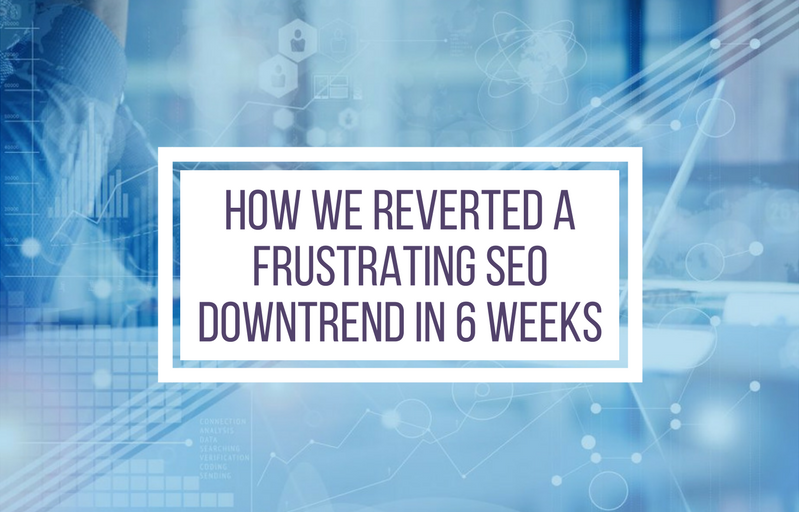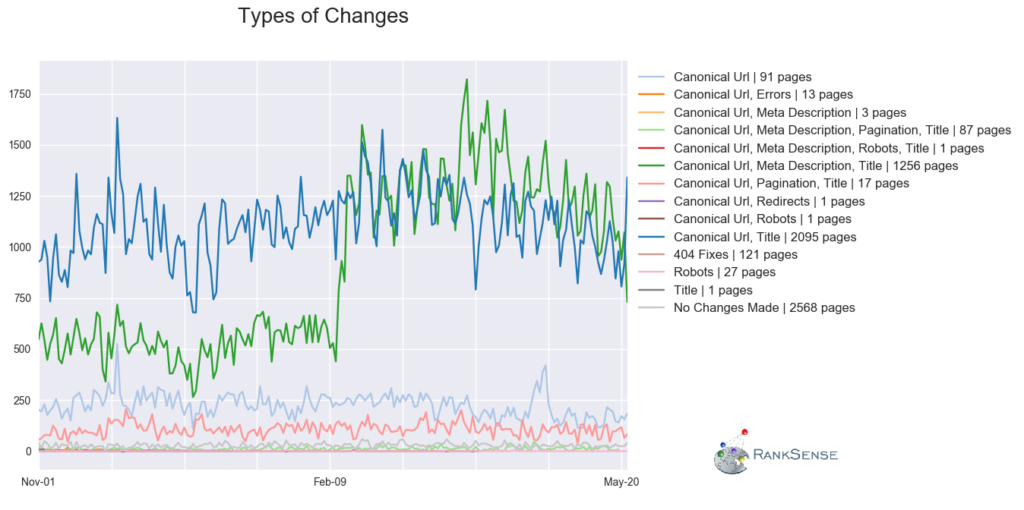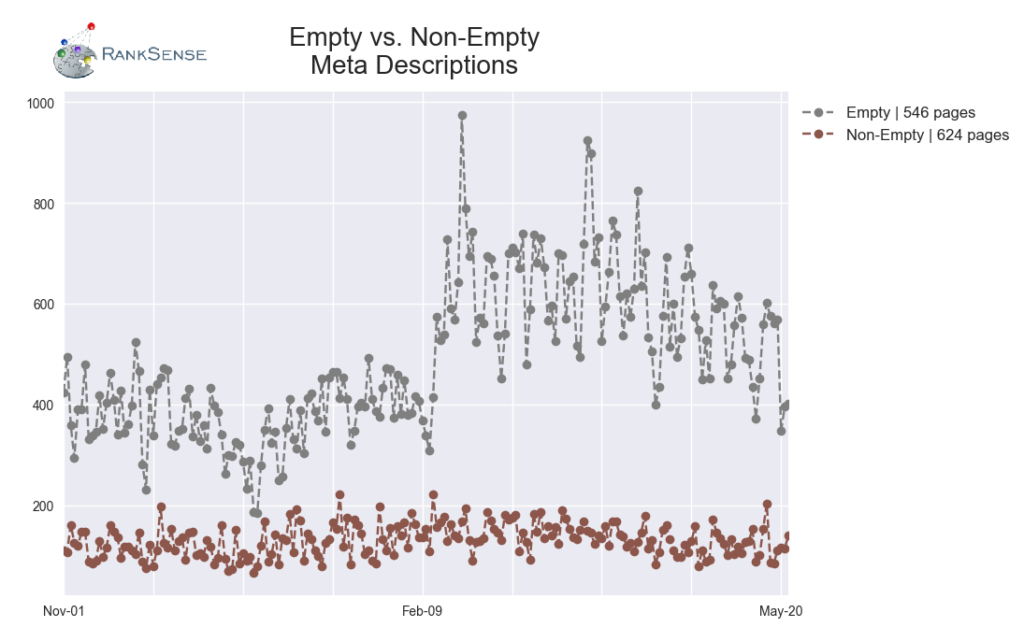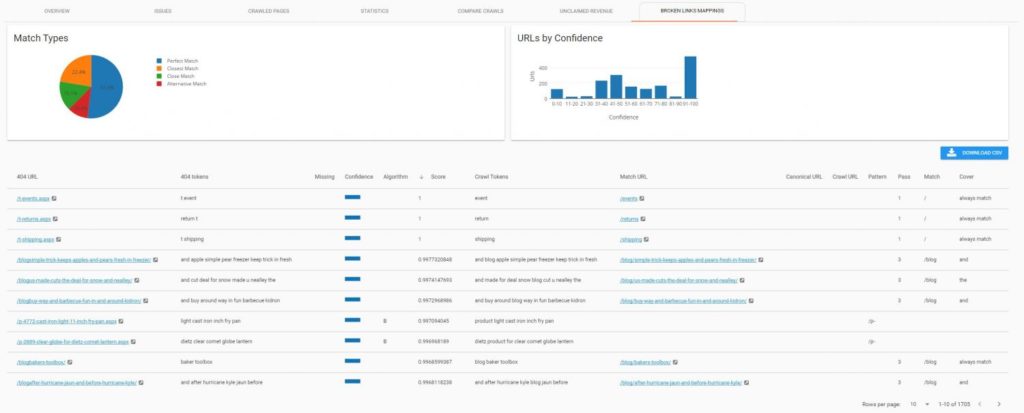
What do you do when you’re losing organic traffic and you don’t know why? An SEO audit from an expert like Hamlet can help, but they often come with so many recommendations that it’s difficult to execute everything. How do you know which changes are worth your time and resources?
In this post, I’ll walk you through a case study of an ecommerce site that went from a traffic downtrend to growth in a couple of months. Their traffic was at -12.8% YOY for 2016. After the first month, the traffic was at -7.3%. By the second month, it was up by +21.8%, and it’s now at +21.9% and holding. Their downtrend was reversed within six weeks of implementation:

I’ll explain how we were able to quickly reverse their traffic downtrend. Rather than the typical approach of tweaking content, optimizing keywords and building links, we focus on SEO issues that are often overlooked – site infrastructure, coding and tagging. I’ll show how our unique approach speeds up the process of SEO and allows us to measure the benefit of all the changes we make.
When we first met Chris Graham of MoreBeer.com at a trade show, his site was losing traffic to newer competitors who ranked higher in search results. These competitors charged more for lower quality home brewing equipment, so he knew price and quality weren’t the problem. The problem was SEO.
https://vimeo.com/227089481
Chris sought the help of SEO experts to improve his traffic. However, his developers had difficulty executing all the SEO recommendations alongside the other projects on their plate. It was difficult to know which changes to prioritize, and they weren’t seeing the results they needed.
Our automated solution
Manual SEO primarily focuses on content, keywords and links. In our experience, most well-managed ecommerce sites are doing a fine job on content and keyword optimization, but are neglecting other important aspects of SEO. (This is due, in part, to the fact that technical resources are generally scarce.) Our approach to SEO is to build a solid foundation of good site infrastructure and coding. We call this the Foundational SEO Method.

Foundational SEO ensures that your pages can be found in search engine results in the first place. Rather than starting with keywords and content, this approach focuses on crawlability, indexation and tagging issues, among others. The goal is to get more pages ranking and receiving organic search traffic, not just higher rankings for pages that already rank.
One benefit of the Foundational SEO Method is that it can be automated by software. Our platform can apply SEO changes to thousands of pages instantaneously. We can also track the effect that different changes have over time, so that we know what changes actually helped. Because our platform has artificial intelligence built in, it learns what changes have the most impact and improves its recommendations over time – even if Google’s algorithm changes. We see that by addressing infrastructure, coding and tagging issues, we can consistently deliver traffic increases of at least 15%, because almost all ecommerce sites suffer from these problems.
Before I dive into the results that MoreBeer saw, a quick note on terminology. At RankSense, we only consider a page optimized if it ranks and drives traffic. We don’t look at a ranking factor checklist and call a page “optimized” – we only look at results. So when I say a page “became optimized,” it means a page started receiving traffic where it wasn’t receiving any before.
Which recommendations made the difference for MoreBeer?
We have a standard set of technical issues that we check for every client, and then we customize our research per site based on the findings from the free scan. Almost every page on MoreBeer.com had at least one issue to fix. To figure out which factors had the most impact, we grouped pages by the types of changes that we made, and monitored the number of new users coming from the organic search channel:

We grouped pages by what SEO changes were made and tracked the number of new users.
Meta description improvements
Back to the blue and green groups – was the difference in performance coming from the meta description updates? At first glance, that appears to be the main difference between those two groups.
To delve further into this question, we looked at the optimized pages. (Remember our definition of an optimized page?) We separated both groups into pages that were already optimized (already receiving traffic before we made any changes) and pages that had just become optimized (were not receiving traffic before but are now).

Pages that were already optimized (receiving traffic) versus pages that became optimized after our changes.

Pages that had no meta description before our changes (empty) compared to pages that had updates to an existing meta description (non-empty). Note: Pages that were receiving 301 redirects were removed from this plot – more on this later.

The pages in the green group were separated into brewing technique pages and all others. The pages were grouped by how many new users they had (x-axis), then the number of pages were counted (y-axis).
Reclaiming link equity
Some of the pages in the green group (16%) were receiving more link equity because we repaired broken backlinks on the site. For every client, we look for broken backlinks: pages that no longer exist but that some external source links to. Whenever possible, we redirect the dead URLs to a relevant live page on the site. This passes the link equity along to the live page, boosting its reputation in the eyes of search engines.
We found that the pages that were receiving 301 redirects were more likely to have an increase in traffic.
Let’s revisit the graph from above, separating out all the pages that were receiving redirects (red line):

As in the above graph, the number of new users were tracked over time for different SEO changes, but pages receiving new 301 redirects were separated from all groups (red).

Mapping broken links to live pages with software
Conclusion
Both of the issues that had the most impact for MoreBeer – missing meta descriptions and broken backlinks – are tedious to fix manually. Writing thousands of meta descriptions takes serious time and effort, as does finding a good match for each 404 URL. If you aren’t certain that there will be any benefit, it probably doesn’t seem worth the effort. In any business, there are a myriad of other issues to devote your time to where the benefit is more certain (and where the work isn’t so boring!).
Our automated approach simplified the task of validating those changes. When we begin working with a new client, we have a good idea of what changes will be the most effective, but our software is able to verify that our educated guesses are correct. SEO is usually somewhat of an art, but our approach makes it more of a science, breaking it down into a methodical process of testing hypotheses, making observations and drawing conclusions. Foundational SEO isn’t able to replace content efforts, but it compliments them, maximizing the value that you get out of your content.
The SEO fixes that will have the biggest impact vary from site to site. We knew that MoreBeer had opportunity to reverse their downtrend because their free scan showed that they had a good number of foundational SEO issues to fix. For other clients, the biggest issues might be duplicate content or poor crawlability. By taking a methodical approach to foundational SEO issues, we’re able to identify a variety of problems and validate our fixes.
Key takeaways
- While producing high quality content is essential, ignoring tedious foundational SEO work can cost you dearly. We took MoreBeer from a -12.8% YOY traffic downtrend to +21.9% YOY and holding by addressing SEO tagging issues.
- Measuring the outcome of various SEO fixes gave us the confidence that we caused the improvements, and provided insights into which changes were the most effective so we can continually improve our SEO process.
- The changes that made the biggest difference for MoreBeer were implementing 301 redirects for broken backlinks and adding meta descriptions to pages that didn’t have them. This is, understandably, the kind of mind-numbing work that no marketer or business owner wants to do, but that our platform will gladly do with no complaints. 🙂
MoreBeer’s growth has been holding at +20-22% YOY for four months at the time of this writing. Here’s Chris to tell you how it turned out:
https://vimeo.com/225268877









